Things to do in Barcelona
Barcelona is a sightseer's paradise that has internationally celebrated architecture, seven beaches and 10 hectares (25 acres) of municipal parkland. From the hills of Montjuic and Tibidabo, visitors can take in the scope of the destination and look down on the scenic tree-lined La Ramblas Boulevard, which is the iconic pedestrian street running from the city centre to Barcelona's oldest harbour, Port Vella.
With beautiful warm weather for most of the year, Barcelona is one of those cities blessed with plenty of outdoor attractions and activities. Visitors can splash around in the turquoise Mediterranean, cycle the neighbourhoods of this bicycle friendly city, or jump on the hop-on hop-off tourist bus for some sightseeing.
Barcelona also carries with it a rich history. Founded over 2,000 years ago, the city's architecture reflects its Roman heritage, and carries the mark of various influences since. Particularly notable is the Catalan modernisme architecture movement founded in Barcelona, and Gaudi's distinctive creations are among many of the city's buildings declared as World Heritage Sites. The weird and wonderful architectural and artistic creations of Barcelona make the city refreshingly unique, and quite unlike any other urban destination.
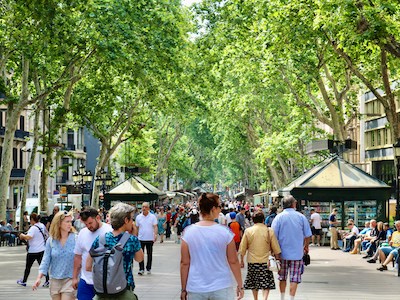
La Rambla
Arguably the most famous street in Europe, the wide tree-lined boulevard known as La Rambla (or Las Ramblas) is a long continuous pedestrian avenue that technically changes names f…
La Rambla
Arguably the most famous street in Europe, the wide tree-lined boulevard known as La Rambla (or Las Ramblas) is a long continuous pedestrian avenue that technically changes names five times as it cuts through Barcelona's Old Town, the Barri Gotic, from the Placa Catalunya to the city's port. It's lined with cafes, restaurants, and shops, usually thronged with leisurely walkers enjoying the sights and sounds. The sprawling marriage of nature and creative architecture and ornamentation that is Gaudi's Guell Park is a must. The pretty square of Placa Reial, enclosed by impressive buildings and promising some fantastic restaurants and nightclubs, is a popular social venue and sometimes hosts concerts and live performances.
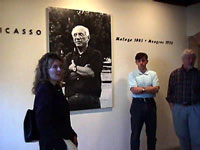
Picasso Museum
Five palaces dating from the 13th to 15th centuries have been converted into the Picasso Museum, celebrating the country's most famous artist. Sitting on Carrer Montcada, a street …
Picasso Museum
Five palaces dating from the 13th to 15th centuries have been converted into the Picasso Museum, celebrating the country's most famous artist. Sitting on Carrer Montcada, a street known for its elegant medieval structures, it's home to one of the most complete collections of works from his youth and formative years. Pablo Picasso spent his early years in Barcelona (between 1901 and 1906), and the museum is now one of the city's top attractions. It was his wish that his early work would be displayed in Barcelona, and the core of the collection was donated by the artist himself. The permanent collection now consists of 4,249 works and the art is complemented interestingly by the old buildings, which showcase the Catalan Gothic style.
Website www.museupicasso.bcn.es
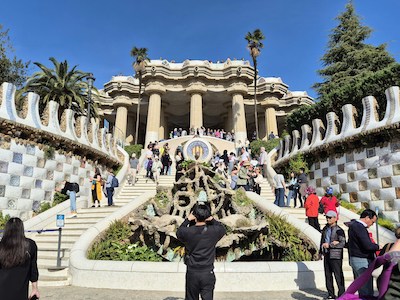
Guell Park
Catalan architect, Antonio Gaudi, was known as the greatest exponent of Catalan Modernism, and left his mark on Barcelona nowhere more than in the gardens of Guell Park. Sitting on…
Guell Park
Catalan architect, Antonio Gaudi, was known as the greatest exponent of Catalan Modernism, and left his mark on Barcelona nowhere more than in the gardens of Guell Park. Sitting on Camel Hill and offering splendid views of the city, it was originally planned to be a garden city suburb. However, only two houses were completed before it was turned into a public recreational park. The gardens are festooned with examples of Gaudi's strange and mesmerising work, including flights of stairs, columns, and a plaza decorated with mosaics. Famous features include Gaudi's dragon, and the Sala Hipostila, or Doric Temple, which is a forest of 88 stone columns. Gaudi enjoyed experimenting with natural forms and the park is a fascinating mixture of art and nature.
Website www.parkguell.barcelona/en?q=en
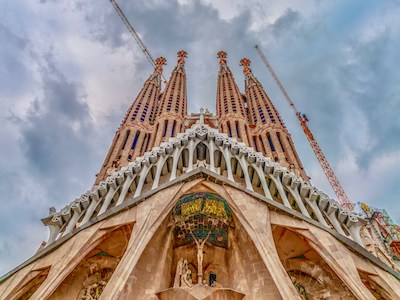
La Sagrada Familia
Designed by modernist architect Antoni Gaudi, the bizarre Sagrada Família is one of Catalonia's most intriguing landmarks. Building started in 1882, but it remains unfinished and …
La Sagrada Familia
Designed by modernist architect Antoni Gaudi, the bizarre Sagrada Família is one of Catalonia's most intriguing landmarks. Building started in 1882, but it remains unfinished and an object of controversy. Gaudi worked on what was considered his masterpiece until his death in 1926. The structure displays his characteristic Art Nouveau style and creates a unique interpretation of the Gothic architectural tradition. Gaudi's plans for the completed church were mostly destroyed during the Spanish Civil War and those leftover have been disputed since. The extraordinary building is a UNESCO World Heritage Site, and is fascinating even to those who don't find it beautiful. The church has been consecrated and is used for religious services.
Website www.sagradafamilia.org
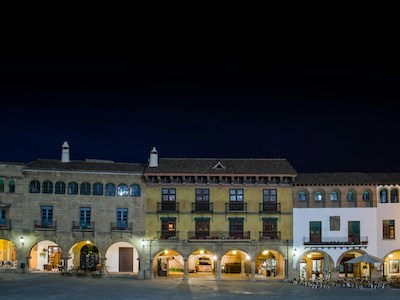
Montjuic
A few of Barcelona's showpieces sit on the hill of Montjuic, which overlooks the city centre. They are the main sites of the 1992 Olympics; the Poble Espanyol; the Joan Miro museum…
Montjuic
A few of Barcelona's showpieces sit on the hill of Montjuic, which overlooks the city centre. They are the main sites of the 1992 Olympics; the Poble Espanyol; the Joan Miro museum; and the National Art Museum of Catalonia. Montjuic has been the site of several fortifications over the centuries and the most recent of these is the Castle of Montjuic, dating from the 17th century. The castle is now home to the Military Museum as well as the Museum of Comics and Illustration. There are also some leisure attractions and green parks festooned with fountains that are themselves popular attractions. They entertain on summer evenings with displays of light, colour, and music. Accessible by cable car from Montjuic, the La Barceloneta port district is below the hill.
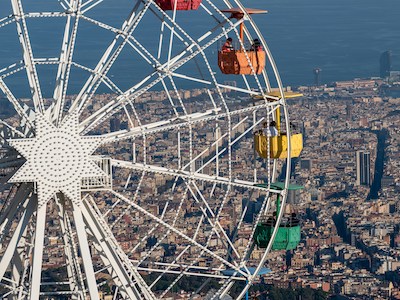
Tibidaboa
Barcelona's second landmark hill, Tibidabo, lies about four miles (6km) northwest of the city in a wooded range that forms a backdrop to the urban landscape. Tibidabo can be reache…
Tibidaboa
Barcelona's second landmark hill, Tibidabo, lies about four miles (6km) northwest of the city in a wooded range that forms a backdrop to the urban landscape. Tibidabo can be reached by funicular and is particularly popular on weekends with locals, as it's home to the Parc d'Atraccions: an amusement park that has some thrilling rides and a renowned house of horrors. Tibidabo also features the soaring Torre de Collserola telecommunications tower, which offers visitors the chance to ride in a glass lift to an observation platform 377 feet (115m) high to enjoy a truly phenomenal view.
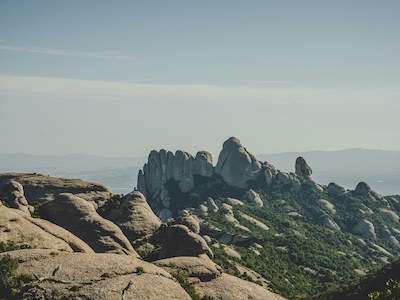
Montserrat
One of the most visited sites in Catalonia is the monastery at Montserrat, which is 35 miles (56km) northwest of Barcelona. The monastery is surrounded by strange rocky crags and c…
Montserrat
One of the most visited sites in Catalonia is the monastery at Montserrat, which is 35 miles (56km) northwest of Barcelona. The monastery is surrounded by strange rocky crags and caves, and was founded in 1025 to celebrate local visions of the Virgin Mary. It has become one of the most important pilgrimage sites in Spain, sitting atop a 4,000-foot (1,200m) high mountain and housing about 80 monks. Its main claim to fame is a 12th-century Romanesque wooden sculpture of a black Virgin Mary, known as La Moreneta, which thousands come here to see and touch. There's lots to see at Montserrat, which has a fascinating museum housing masterpieces by artists such as Caravaggio and Picasso.
Website www.montserratvisita.com/en/index.html
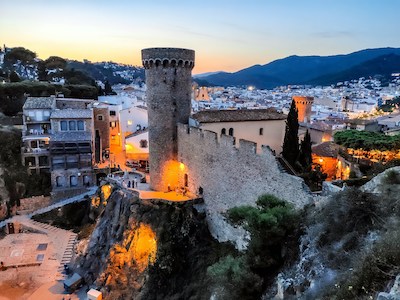
Tossa de Mar
The medieval fishing village of Tossa de Mar, 56 miles (90km) north of Barcelona, is the most attractive town on the Costa Brava, offering lovely sandy beaches and a lively atmosph…
Tossa de Mar
The medieval fishing village of Tossa de Mar, 56 miles (90km) north of Barcelona, is the most attractive town on the Costa Brava, offering lovely sandy beaches and a lively atmosphere. Visitors are drawn to its 12th century walled town, Vila Vella, the ancient walls, battlements, and towers enclosing a quaint historical labyrinth. There is also the ancient Castillo de Tossa de Mar, a one-time Roman fortress dominating the bay, which visitors are free to explore. There are four beaches within the town itself and numerous others flanking Tossa on either side.
Website www.infotossa.com
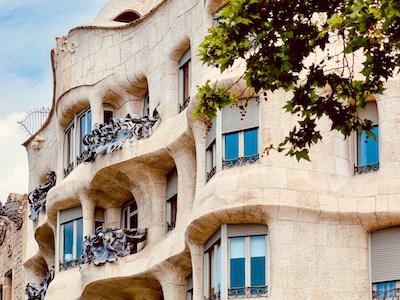
La Pedrera (Casa Mila)
Commonly known as La Pedrera, Casa Mila is an iconic construction by creative genius Antoni Gaudi. It was his last civil work before dedicating all his time to the assembly of La S…
La Pedrera (Casa Mila)
Commonly known as La Pedrera, Casa Mila is an iconic construction by creative genius Antoni Gaudi. It was his last civil work before dedicating all his time to the assembly of La Sagrada Família. The building is a UNESCO World Heritage Site and demonstrates the signature style of Gaudi through its elaborate designs, globular shapes, assorted sculptures, colourful tiles, and intricate details. Built between 1906 and 1912, the distinct architecture of La Pedrera and her counterparts was unconventional and unheard of in the popular Spanish architecture of the time. The remarkable building is now a cultural centre that organises a range of activities and hosts exhibitions of various kinds.
Website www.lapedrera.com/en
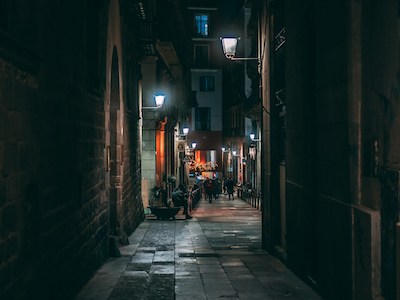
Barri Gotic
Known as the Gothic Quarter, the Barri Gotic is Barcelona's oldest district. A former fortified Roman settlement, the maze of atmospheric narrow streets house spectacular Gothic bu…
Barri Gotic
Known as the Gothic Quarter, the Barri Gotic is Barcelona's oldest district. A former fortified Roman settlement, the maze of atmospheric narrow streets house spectacular Gothic buildings and cathedrals, marking the city's heyday during the 14th and 15th centuries. There are many significant sights; the most illustrious being the immense Gothic Cathedral La Seu, with its breathtaking facade and serene cloister. With an assortment of shops and delightful sidewalk cafes, the Barri Gotic is a worthwhile day out. To view the remains of this ancient Roman city, once known as Barcino, travellers should visit the Museu d'Historia de la Ciutat in the Palau Real, where Roman streets are still visible in the extensive cellar.

FC Barcelona Museum and Stadium
FC Barcelona, one of Europe's most beloved football teams, has an informative museum with displays of photographs, documents, memorabilia, and trophies that cover over a century of…
FC Barcelona Museum and Stadium
FC Barcelona, one of Europe's most beloved football teams, has an informative museum with displays of photographs, documents, memorabilia, and trophies that cover over a century of club history. Visitors also get the opportunity to explore the famous stadium on the Camp Nou Tour, which takes fans to the heart of the club, the changing rooms, tunnel and Nou Camp pitch. With a panoramic view of the stadium from the grandstand, visitors can get a taste of the heady atmosphere of a FC Barcelona match on their home ground. The museum also has an official store where club jerseys, caps and accessories can be purchased.
Website www.fcbarcelona.com
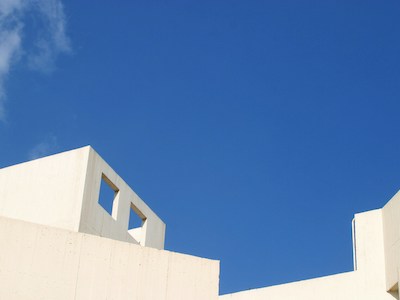
Joan Miro Foundation
A celebration of the life and work of world-renowned Catalan surrealist sculptor and painter Joan Miro, the Joan Miro Foundation in Barcelona houses the majority of the artist's wo…
Joan Miro Foundation
A celebration of the life and work of world-renowned Catalan surrealist sculptor and painter Joan Miro, the Joan Miro Foundation in Barcelona houses the majority of the artist's works, including paintings, drawings, sculptures, and textiles. Distinguished by his use of primary colours, simple lines, and two-dimensional geometric shapes, Miro refused to be categorised into an established art movement and, as a result, continued to create unparalleled works of art. Another product of original artistic genius from Barcelona, the works of Miro at the Joan Miro Foundation allow visitors to further delve into the unrestrained creative energy of this exceptional city.
Website www.fmirobcn.org/en/
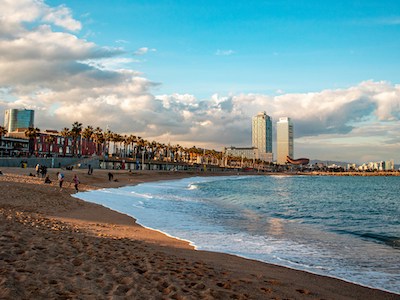
Barcelona Beaches
Barcelona's coastline offers a string of attractive beaches, which are the ideal diversion after excessive sightseeing and shopping. Travellers can visit the popular Barceloneta Be…
Barcelona Beaches
Barcelona's coastline offers a string of attractive beaches, which are the ideal diversion after excessive sightseeing and shopping. Travellers can visit the popular Barceloneta Beach, only ten minutes from the city centre, where there is a selection of beach bars, and can cool down with a refreshing swim and marvel at the bizarre architecture of Homenatge a la Barceloneta by Rebecca Horn. Windsurfing and kite surfing are popular activities on this always-bustling beach. The end of Barceloneta and the beginning of Icaria Beach is marked by Frank Gehry's El Peix. Marbella Beach is unofficially Barcelona's nudist beach but, although nudity is tolerated, many people choose to keep their clothes on. For a peaceful beach near the city centre, visitors should look no further than Caldetes, which is invariably almost empty.
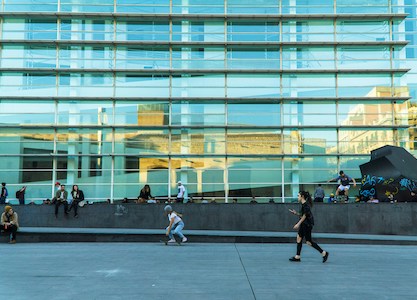
Museum of Contemporary Art
The Barcelona Museum of Contemporary Art is situated in the once-shabby Raval District, just off La Rambla. Over the years its front plaza has become synonymous with international …
Museum of Contemporary Art
The Barcelona Museum of Contemporary Art is situated in the once-shabby Raval District, just off La Rambla. Over the years its front plaza has become synonymous with international skateboarders, being fondly known as the famous MACBA, drawing skaters and creatives from around the world to unite, compete, and collaborate against the backdrop of this chic white building. Being a work of art in itself, the Museum of Contemporary Art was designed to take advantage of as much natural light as possible and the cool, airy interiors confidently hold the works of modern art luminaries such as Basquiat, Klee, Tapies, and Barcelo. Kids will enjoy the museum, as there is a lot to touch and interact with.
Website www.macba.es
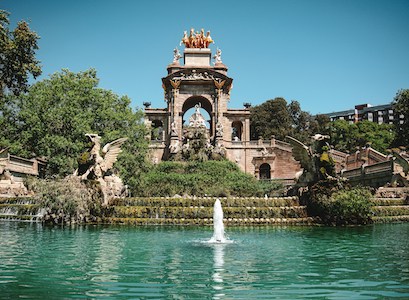
Parc de La Ciutadella
Located in the centre of Barcelona, the Parc de La Ciutadella is a great place to spend a sunny summer's afternoon relaxing under a tree with a book, a picnic and the family. Origi…
Parc de La Ciutadella
Located in the centre of Barcelona, the Parc de La Ciutadella is a great place to spend a sunny summer's afternoon relaxing under a tree with a book, a picnic and the family. Originally the site was chosen for a fortress in 1714, but in 1869 it was decided that the area should be a park and the palace was demolished. Exploring the park and being out on the water is a fun way to unwind, as the setting features a lake where visitors can hire a small rowboat. The paths for walking, jogging and cycling are wide and well maintained; there are some interesting sculptures dotted about the park, as well as some striking buildings.
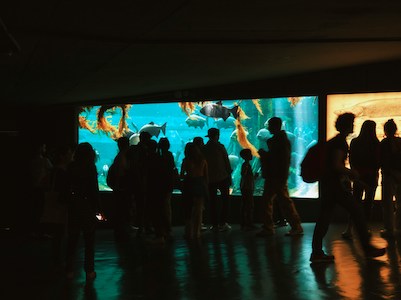
Barcelona Aquarium
Featuring thousands of brightly coloured and exotic fish, the Barcelona Aquarium is a must for children of all ages. With 35 different tanks holding creatures from different oceans…
Barcelona Aquarium
Featuring thousands of brightly coloured and exotic fish, the Barcelona Aquarium is a must for children of all ages. With 35 different tanks holding creatures from different oceans, the aquarium is the largest of its kind in Europe and features species such as giltheads, moray eels, sunfish, rays, sand tiger sharks, and sandbar sharks. The oceanarium is the largest Mediterranean-themed aquarium in the world and the showpiece of the Barcelona Aquarium, where visitors will find a transparent tunnel winding through it that gives them the exhilarating feeling of walking underwater. The whole aquarium houses about 11,000 organisms from 450 different species.
Website www.aquariumbcn.com

Poble Espanyol
The mock village of Poble Espanyol is an outdoor open-air architectural museum featuring workshops, where visitors can see different types of craftwork taking place. Around 117 bui…
Poble Espanyol
The mock village of Poble Espanyol is an outdoor open-air architectural museum featuring workshops, where visitors can see different types of craftwork taking place. Around 117 buildings, streets and squares make up the village and have been reproduced to scale, giving the true feel of a Spanish village. The village was built in 1929 for the Barcelona International Exhibition and some of the replica buildings have now outlived the originals, which were found in villages across Spain. Visitors can purchase high-quality handmade dolls, embroidery, glassware, soap, textiles, ceramics and more from the 30-plus craft workshops that specialise in the traditional secrets of producing these items.
Website www.poble-espanyol.com
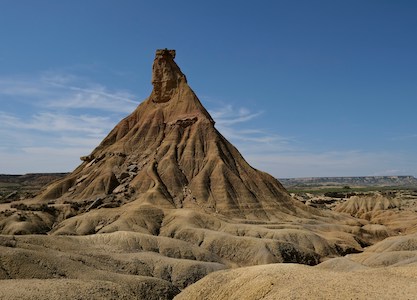
Parque Natural de Bardenas Reales
The UNESCO Biosphere Reserve of Parque Natural de Barenas Reales is a semi-desert landscape. The malleable clay, chalk, and sandstone of the landscape has been eroded into surprisi…
Parque Natural de Bardenas Reales
The UNESCO Biosphere Reserve of Parque Natural de Barenas Reales is a semi-desert landscape. The malleable clay, chalk, and sandstone of the landscape has been eroded into surprising and unusual shapes by wind and rain over the millennia. Vegetation of any kind is scarce in the reserve, as is human habitation, and the streams that flow across the barren land are seasonal. The rugged cliffs, hills and ravines are home to Egyptian Vultures, Golden Eagles and Peregrine Falcons, plus a total of 24 species of birds of prey, as well as many other bird and animal species.
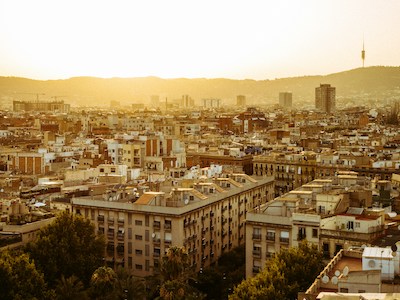
El Raval
El Raval is a compelling and interesting neighbourhood with a long and chequered history. It's one of two districts bordering La Rambla, with the other being the established touris…
El Raval
El Raval is a compelling and interesting neighbourhood with a long and chequered history. It's one of two districts bordering La Rambla, with the other being the established tourist area of Barri Gotic. Located near Barcelona's port, El Raval has always had an exciting, multicultural character, and is particularly popular with backpackers and revellers keen to check out the city's cutting-edge galleries and clubs.
While having undergone a period of development, the area still remains slightly dangerous and tourists should be careful of pickpockets and avoid walking alone at night. El Raval is full of cool bars and funky cafes that beg to be explored, from Bar Marsella with its Art Nouveau interior to London Bar, a run-down though stately place once frequented by artists such as Hemingway, Picasso, and Mirò. Another great sight in El Raval is the Palau Guell, one of Gaudi's lesser-known masterpieces, which features large parabolic gates decorated with beautiful ironwork.
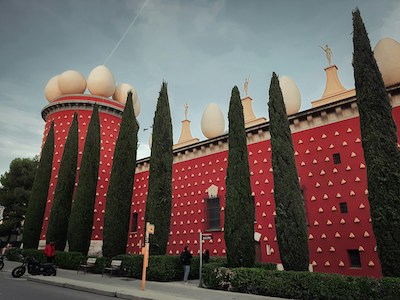
Figueres
A wonderful daytrip destination from Barcelona, Figueres is a lovely Catalonian town that also happens to be the birthplace of surrealist artist Salvador Dali. The main reason for …
Figueres
A wonderful daytrip destination from Barcelona, Figueres is a lovely Catalonian town that also happens to be the birthplace of surrealist artist Salvador Dali. The main reason for visiting Figueres is to see the Dali Theatre and Museum (Teatre-Museu Dalí), a suitably bizarre-looking building that is pink, studded and crowned with enormous eggs. It was not only designed by Dali, but also houses a full spectrum of his imaginative output including paintings, sculptures, 3D collages, mechanical devices, and weird and wonderful installations. The artist is buried in the museum's basement.



